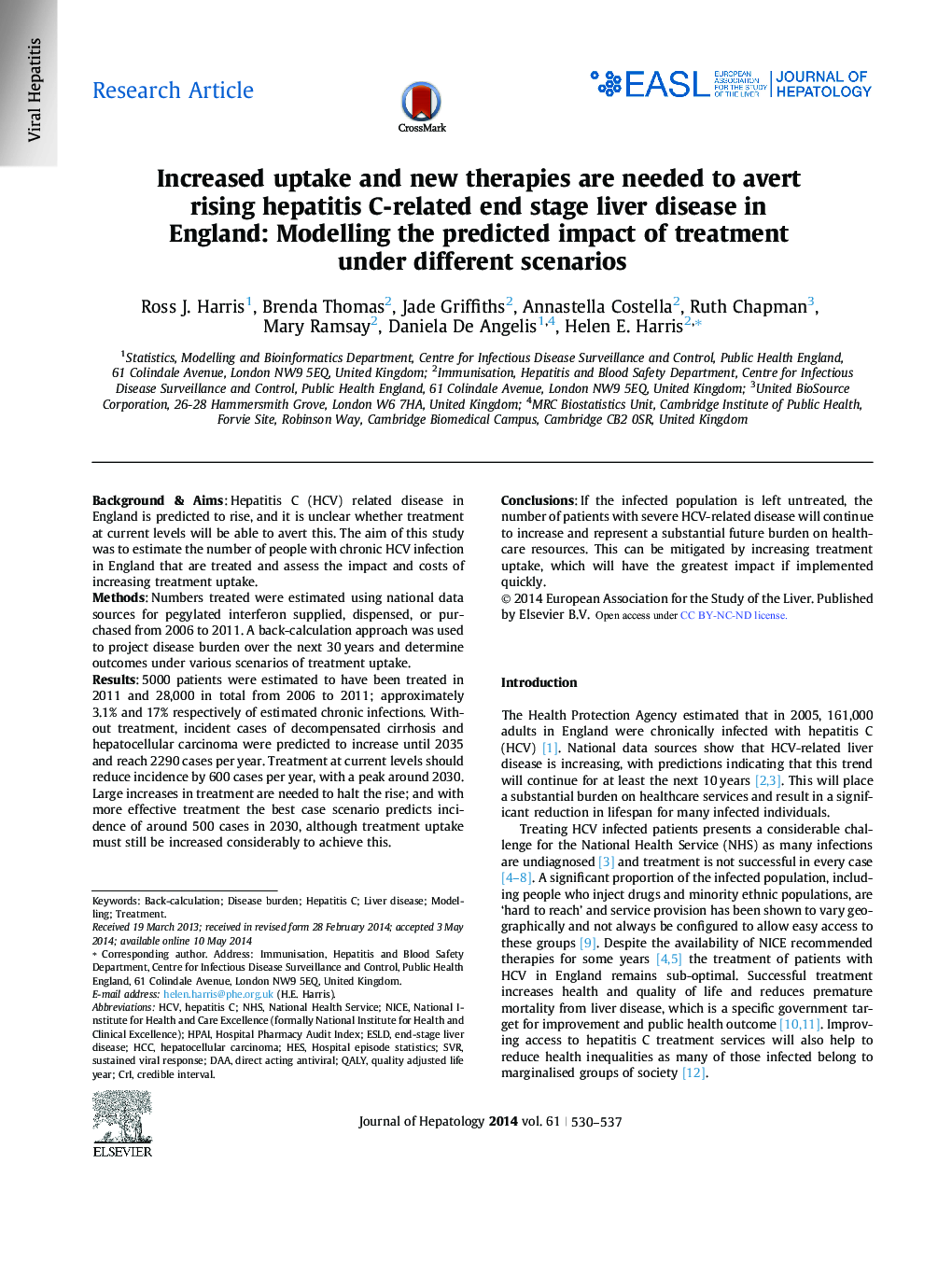| Article ID | Journal | Published Year | Pages | File Type |
|---|---|---|---|---|
| 6103230 | Journal of Hepatology | 2014 | 8 Pages |
Background & AimsHepatitis C (HCV) related disease in England is predicted to rise, and it is unclear whether treatment at current levels will be able to avert this. The aim of this study was to estimate the number of people with chronic HCV infection in England that are treated and assess the impact and costs of increasing treatment uptake.MethodsNumbers treated were estimated using national data sources for pegylated interferon supplied, dispensed, or purchased from 2006 to 2011. A back-calculation approach was used to project disease burden over the next 30Â years and determine outcomes under various scenarios of treatment uptake.Results5000 patients were estimated to have been treated in 2011 and 28,000 in total from 2006 to 2011; approximately 3.1% and 17% respectively of estimated chronic infections. Without treatment, incident cases of decompensated cirrhosis and hepatocellular carcinoma were predicted to increase until 2035 and reach 2290 cases per year. Treatment at current levels should reduce incidence by 600 cases per year, with a peak around 2030. Large increases in treatment are needed to halt the rise; and with more effective treatment the best case scenario predicts incidence of around 500 cases in 2030, although treatment uptake must still be increased considerably to achieve this.ConclusionsIf the infected population is left untreated, the number of patients with severe HCV-related disease will continue to increase and represent a substantial future burden on healthcare resources. This can be mitigated by increasing treatment uptake, which will have the greatest impact if implemented quickly.
